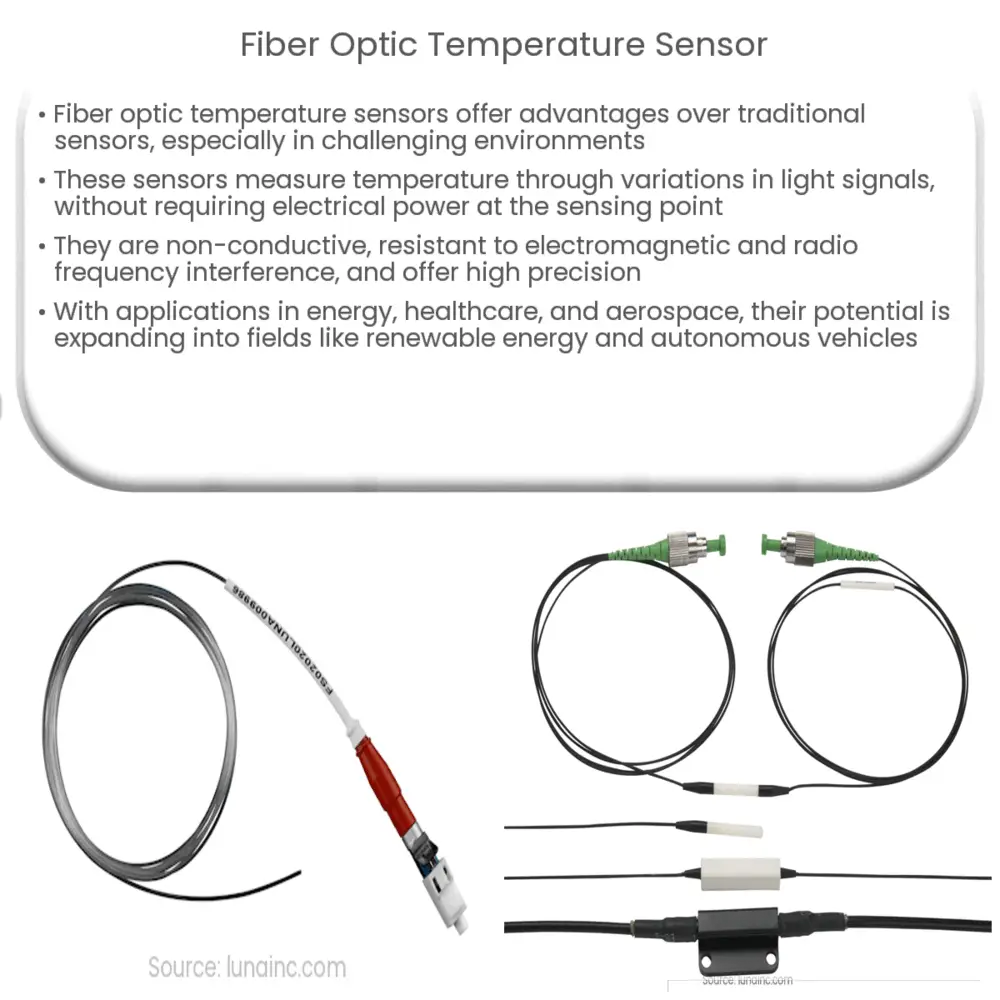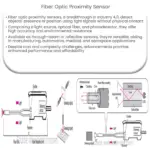Explore the world of fiber optic temperature sensors – their operation, advantages, applications, types, and future outlook in sensor technology.

Fiber Optic Temperature Sensors: An Overview
Fiber optic temperature sensors are innovative tools that offer several advantages over traditional temperature sensors. Primarily used in challenging environments where standard sensors fail to deliver, these sensors have gained considerable traction in various industries.
What are Fiber Optic Temperature Sensors?
Fiber optic temperature sensors are devices that measure temperature by interpreting the variation in light signals. Unlike conventional sensors, they do not need electrical power at the sensing point, thereby making them inherently safe in volatile environments.
- Construction: At its core, a fiber optic temperature sensor comprises a light source, optical fiber, sensing element, and a detector.
- Operation: The light source sends light through the optical fiber to the sensing element, which changes its properties based on the temperature. This change is detected and translated into a temperature reading.
Advantages of Fiber Optic Temperature Sensors
Fiber optic temperature sensors offer distinct benefits that make them suitable for various applications. Here are some of the primary advantages:
- Non-conductive: As they use light signals instead of electrical signals, these sensors are entirely non-conductive, making them perfect for applications involving high voltages.
- Resistant to EMI/RFI: These sensors are immune to electromagnetic interference (EMI) and radio frequency interference (RFI), ensuring accurate readings in environments with a high level of such interferences.
- High Precision: Fiber optic temperature sensors are known for their accuracy and repeatability, providing reliable results even in harsh conditions.
Applications of Fiber Optic Temperature Sensors
Fiber optic temperature sensors find wide-ranging applications in industries such as:
- Energy: In power plants, these sensors are used for temperature monitoring in high-voltage equipment and transformers.
- Healthcare: They are used in medical applications, such as MRI scans, where traditional temperature sensors are unsuitable due to the strong magnetic field.
- Aerospace: In the aerospace industry, they monitor conditions in jet engines and spacecraft.
In the next part, we will delve deeper into the working principle of fiber optic temperature sensors, various types, and the future outlook in the sensor technology landscape.
Working Principle of Fiber Optic Temperature Sensors
Fiber optic temperature sensors work on the principle of light intensity modulation. The sensor’s optical fiber carries light from the light source to the sensing element, which is typically a material that changes its optical properties with temperature. This change is then detected and converted into a temperature reading.
Types of Fiber Optic Temperature Sensors
There are several types of fiber optic temperature sensors, each with its unique characteristics and advantages:
- Fabry-Perot Interferometers: These sensors operate based on the principle of interference and offer high accuracy and stability.
- Fluorescence-based Sensors: These sensors detect temperature changes based on the variation in fluorescence signals from specific materials.
- Bragg Grating Sensors: These sensors use the principle of diffraction grating to interpret temperature changes. They are known for their robustness and compact size.
The Future of Fiber Optic Temperature Sensors
Fiber optic temperature sensors are at the forefront of sensor technology, with their potential only beginning to be realized. With advancements in fiber optic technology and material science, these sensors are expected to become even more accurate, reliable, and versatile. They are also likely to find new applications in emerging fields such as renewable energy, advanced manufacturing, and autonomous vehicles.
Conclusion
In conclusion, fiber optic temperature sensors represent a significant leap in temperature measurement technology. Their unique advantages, including non-conductivity, immunity to EMI/RFI, and high precision, make them an invaluable tool in many industrial and scientific applications. As technology continues to advance, we can expect these sensors to play an even more critical role in various sectors. The future of temperature sensing is indeed bright, with fiber optic temperature sensors leading the way.



